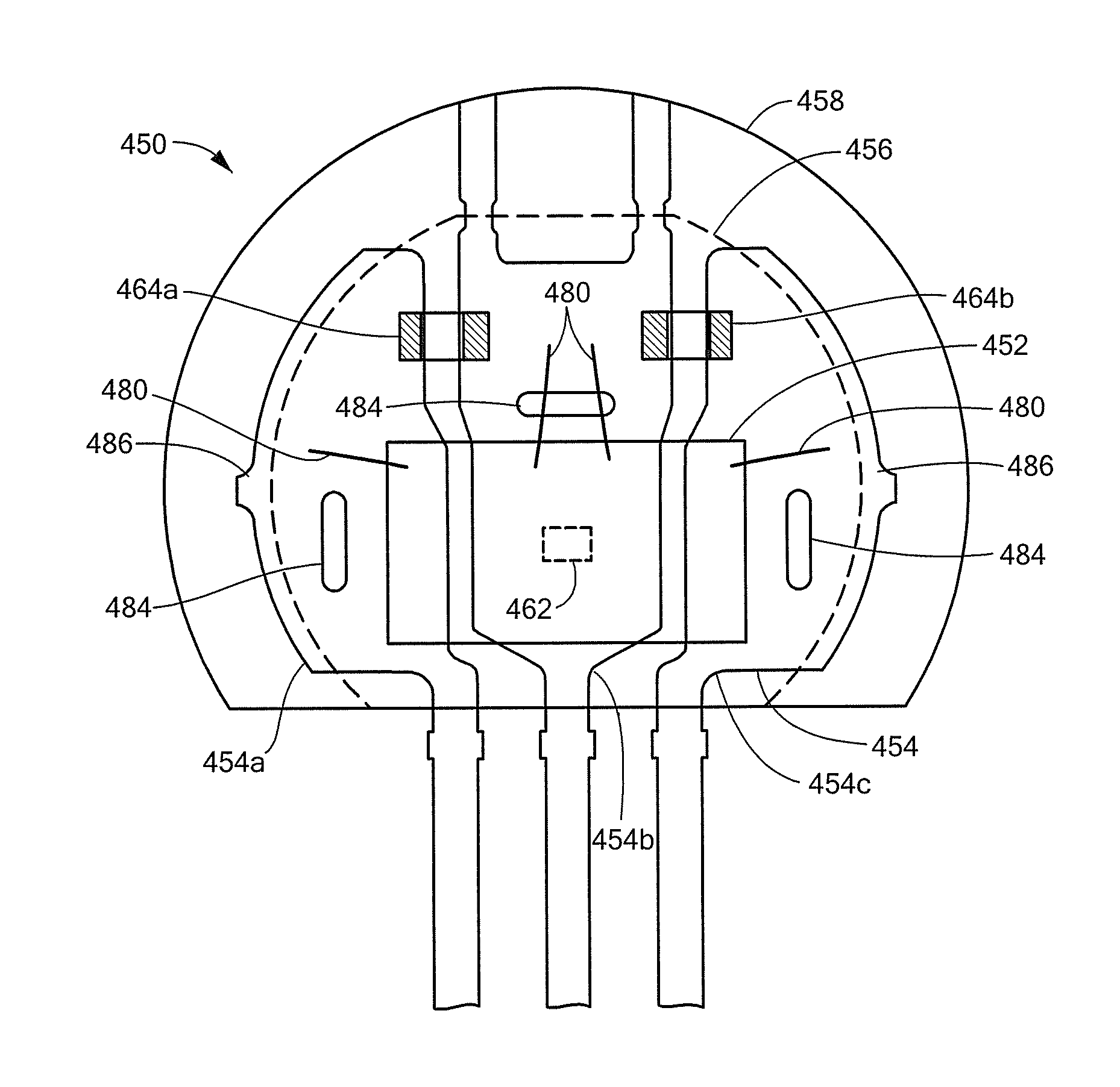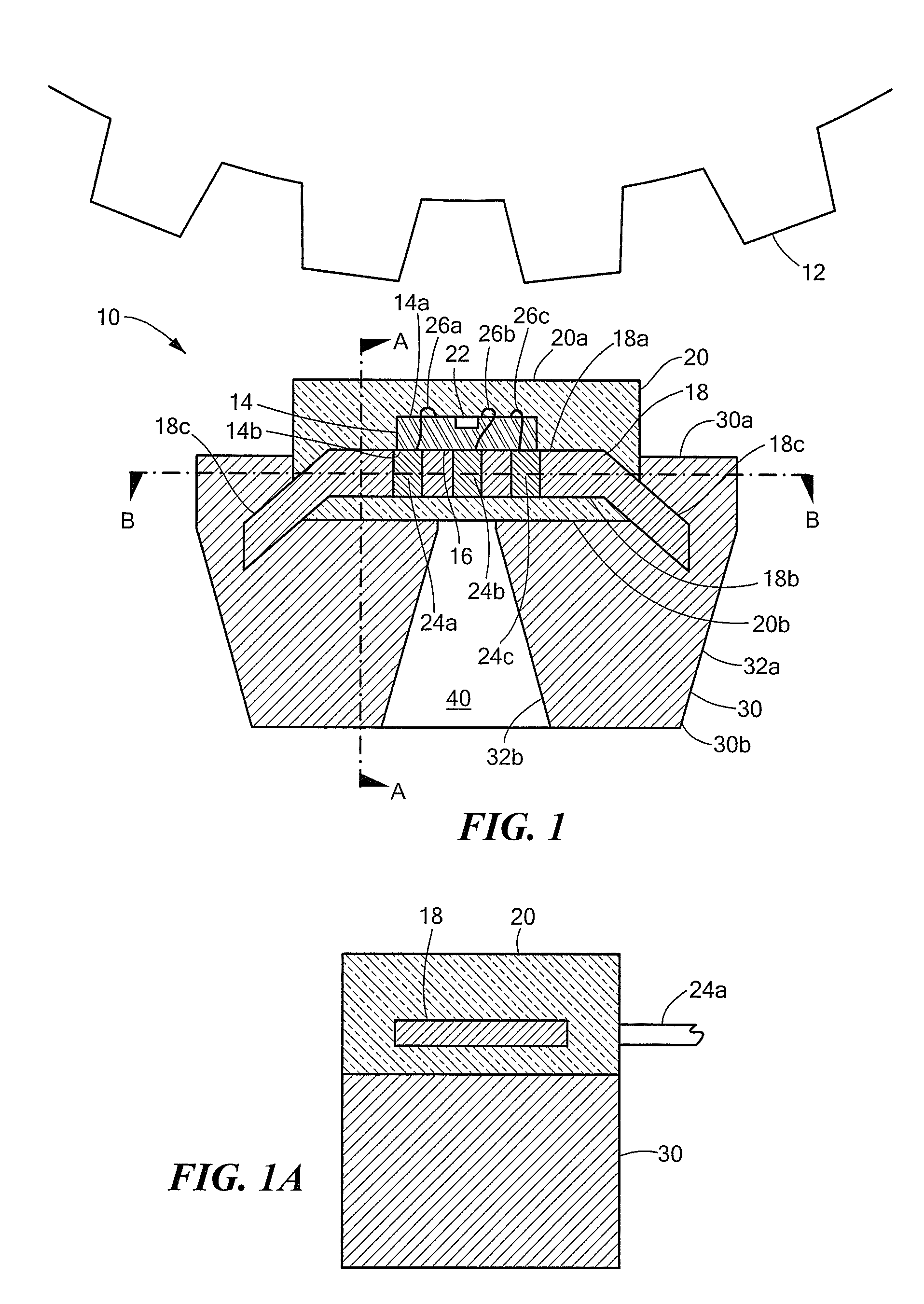Magnetic Field Sensor Integrated Circuit with Integral Ferromagnetic Material
a magnetic field sensor and integrated circuit technology, applied in the field of magnetic field sensors, can solve the problems of relatively high cost of hard magnetic materials used to form magnets and represent a significant part of the overall cost of sensors
- Summary
- Abstract
- Description
- Claims
- Application Information
AI Technical Summary
Benefits of technology
Problems solved by technology
Method used
Image
Examples
embodiment 340
[0123]Another magnetic field sensor embodiment 340, that may be formed by dicing the semiconductor wafer 250 of FIG. 9 into individual die, is shown in FIG. 13 to include a semiconductor die 344 having a first surface 344a over which the layer 346 of ferromagnetic material is formed and a second opposing surface 344b. A magnetic field sensing element 348 (shown as a Hall sensor in the substrate or epi layer) and associated circuitry (not shown) are disposed in the first surface 344a of the die. TSVs 350 are formed through the die 344 to couple the magnetic field sensing element 348 to solder balls 352, as shown, for further coupling to a lead frame that may be the same as or similar to any of the above-described lead frames. An optional layer 354 may be provided between the die surface 344a and the layer 346 in order to protect the die from particles in the layer 346. In such embodiments, the layer 354 may comprise, but is not limited to, a polyimide or BCB layer deposited at the wa...
embodiment 400
[0128]Another magnetic field sensor embodiment 400 is shown in FIG. 15 to include a semiconductor die 402 having a first, active surface 402a in which a magnetic field sensing element 404 is formed and a second, opposing surface 402b. A lead frame 406 having leads 406a-406c is provided with a die attach area 406d to which the surface 402b of the die 402 is attached, such as with the use of adhesives, such as epoxy or an adhesive tape.
[0129]A bias magnet 410 is provided with a non-contiguous central region 410a. As in the above-described embodiments, the bias magnet 410 may take the form of a ring-shaped structure in which case the non-contiguous central region is an aperture or alternatively may form only a partial or alternative ring-shaped structure, such as a D-shaped structure, a C-shaped structure, or a U-shaped structure.
[0130]The magnet 410 includes one or more channels 410b extending laterally from the central region 410a. The die / lead frame / magnet subassembly is overmolded ...
PUM
 Login to View More
Login to View More Abstract
Description
Claims
Application Information
 Login to View More
Login to View More - R&D
- Intellectual Property
- Life Sciences
- Materials
- Tech Scout
- Unparalleled Data Quality
- Higher Quality Content
- 60% Fewer Hallucinations
Browse by: Latest US Patents, China's latest patents, Technical Efficacy Thesaurus, Application Domain, Technology Topic, Popular Technical Reports.
© 2025 PatSnap. All rights reserved.Legal|Privacy policy|Modern Slavery Act Transparency Statement|Sitemap|About US| Contact US: help@patsnap.com



